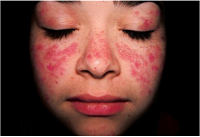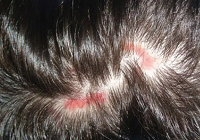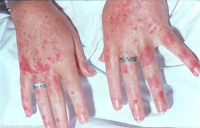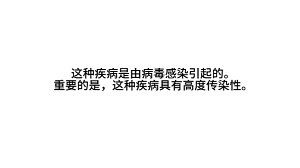

CN 11-1911/B
主办:中国心理学会
中国科学院心理研究所
出版:科学出版社


心理学报 ›› 2024, Vol. 56 ›› Issue (9): 1282-1298.doi: 10.3724/SP.J.1041.2024.01282
收稿日期:2023-09-30
发布日期:2024-06-25
出版日期:2024-09-25
通讯作者:
马祖军
E-mail:zjma@zufe.edu.cn
基金资助:
GONG Yuwen1, DAI Ying1, MA Zujun2( )
)
Received:2023-09-30
Online:2024-06-25
Published:2024-09-25
Contact:
MA Zujun
E-mail:zjma@zufe.edu.cn
摘要:
本文探讨了传染病线索和招募信息中主角对献血意愿的联合作用、潜在心理机制及边界条件。通过4项实验发现, 当传染病线索显著时, 以受助者(vs.捐助者)为主角的招募信息会降低献血意愿。在此基础上, 探讨了潜在心理机制, 即当传染病线索显著时, 以受助者(vs.捐助者)为主角的招募信息将提升人们的状态焦虑水平, 从而降低献血意愿。同时, 还进一步验证了自我建构的调节作用。具体而言, 在传染病线索显著时, 互依自我倾向个体面对以受助者(vs.捐助者)为主角的招募信息更容易感到状态焦虑, 从而降低献血意愿。
中图分类号:
龚钰雯, 代颖, 马祖军. (2024). 传染病线索和招募信息中主角对献血意愿的影响. 心理学报, 56(9), 1282-1298.
GONG Yuwen, DAI Ying, MA Zujun. (2024). Effects of infectious disease cues and donation protagonists on blood donation intention. Acta Psychologica Sinica, 56(9), 1282-1298.
| 源 | III类平方和 | df | 均方 | F | p | η2p |
|---|---|---|---|---|---|---|
| 修正模型 | 2.81a | 3 | 0.94 | 4.92 | 0.003 | 0.07 |
| 截距 | 15.14 | 1 | 15.14 | 79.53 | <0.001 | 0.30 |
| 招募信息中 主角(A) | 0.02 | 1 | 0.02 | 0.13 | 0.725 | <0.01 |
| 传染病线索(B) | 1.01 | 1 | 1.01 | 5.33 | 0.022 | 0.03 |
| A × B | 1.78 | 1 | 1.78 | 9.33 | 0.003 | 0.05 |
| 误差 | 36.16 | 190 | 0.19 | |||
| 总计 | 54.00 | 194 | ||||
| 修正后总计 | 38.97 | 193 |
表1 ANOVA结果(实验1)
| 源 | III类平方和 | df | 均方 | F | p | η2p |
|---|---|---|---|---|---|---|
| 修正模型 | 2.81a | 3 | 0.94 | 4.92 | 0.003 | 0.07 |
| 截距 | 15.14 | 1 | 15.14 | 79.53 | <0.001 | 0.30 |
| 招募信息中 主角(A) | 0.02 | 1 | 0.02 | 0.13 | 0.725 | <0.01 |
| 传染病线索(B) | 1.01 | 1 | 1.01 | 5.33 | 0.022 | 0.03 |
| A × B | 1.78 | 1 | 1.78 | 9.33 | 0.003 | 0.05 |
| 误差 | 36.16 | 190 | 0.19 | |||
| 总计 | 54.00 | 194 | ||||
| 修正后总计 | 38.97 | 193 |
| 源 | III类平方和 | df | 均方 | F | p | η2p |
|---|---|---|---|---|---|---|
| 修正模型 | 34.43a | 5 | 6.89 | 7.81 | <0.001 | 0.13 |
| 截距 | 7154.47 | 1 | 7154.47 | 8111.04 | <0.001 | 0.97 |
| 招募信息中主角(A) | 15.81 | 2 | 7.91 | 8.96 | <0.001 | 0.07 |
| 威胁类型(B) | 7.67 | 1 | 7.67 | 8.69 | 0.003 | 0.03 |
| A × B | 11.33 | 2 | 5.67 | 6.42 | 0.002 | 0.05 |
| 误差 | 226.69 | 257 | 0.88 | |||
| 总计 | 7415.00 | 263 | ||||
| 修正后总计 | 261.12 | 262 |
表2 ANOVA结果(实验2A)
| 源 | III类平方和 | df | 均方 | F | p | η2p |
|---|---|---|---|---|---|---|
| 修正模型 | 34.43a | 5 | 6.89 | 7.81 | <0.001 | 0.13 |
| 截距 | 7154.47 | 1 | 7154.47 | 8111.04 | <0.001 | 0.97 |
| 招募信息中主角(A) | 15.81 | 2 | 7.91 | 8.96 | <0.001 | 0.07 |
| 威胁类型(B) | 7.67 | 1 | 7.67 | 8.69 | 0.003 | 0.03 |
| A × B | 11.33 | 2 | 5.67 | 6.42 | 0.002 | 0.05 |
| 误差 | 226.69 | 257 | 0.88 | |||
| 总计 | 7415.00 | 263 | ||||
| 修正后总计 | 261.12 | 262 |
| 源 | III类平方和 | df | 均方 | F | p | η2p |
|---|---|---|---|---|---|---|
| 修正模型 | 23.59a | 5 | 4.72 | 6.20 | <0.001 | 0.11 |
| 截距 | 6606.39 | 1 | 6606.39 | 8682.36 | <0.001 | 0.97 |
| 招募信息中主角(A) | 10.83 | 2 | 5.42 | 7.12 | 0.001 | 0.06 |
| 疾病威胁类型(B) | 2.80 | 1 | 2.80 | 3.69 | 0.056 | 0.02 |
| A × B | 10.00 | 2 | 5.00 | 6.57 | 0.002 | 0.05 |
| 误差 | 185.66 | 244 | 0.76 | |||
| 总计 | 6821.00 | 250 | ||||
| 修正后总计 | 209.25 | 249 |
表3 ANOVA结果(实验2B)
| 源 | III类平方和 | df | 均方 | F | p | η2p |
|---|---|---|---|---|---|---|
| 修正模型 | 23.59a | 5 | 4.72 | 6.20 | <0.001 | 0.11 |
| 截距 | 6606.39 | 1 | 6606.39 | 8682.36 | <0.001 | 0.97 |
| 招募信息中主角(A) | 10.83 | 2 | 5.42 | 7.12 | 0.001 | 0.06 |
| 疾病威胁类型(B) | 2.80 | 1 | 2.80 | 3.69 | 0.056 | 0.02 |
| A × B | 10.00 | 2 | 5.00 | 6.57 | 0.002 | 0.05 |
| 误差 | 185.66 | 244 | 0.76 | |||
| 总计 | 6821.00 | 250 | ||||
| 修正后总计 | 209.25 | 249 |
| 源 | III类平方和 | df | 均方 | F | p | η2p |
|---|---|---|---|---|---|---|
| 修正模型 | 17.92a | 3 | 5.97 | 6.66 | <0.001 | 0.11 |
| 截距 | 4506.72 | 1 | 4506.72 | 5020.96 | <0.001 | 0.97 |
| 招募信息中主角(A) | 4.57 | 1 | 4.57 | 5.09 | 0.025 | 0.03 |
| 自我建构(B) | <0.01 | 1 | <0.01 | <0.01 | 0.965 | <0.01 |
| A × B | 13.70 | 1 | 13.70 | 15.26 | <0.001 | 0.08 |
| 误差 | 150.79 | 168 | 0.90 | |||
| 总计 | 4688.11 | 172 | ||||
| 修正后总计 | 168.72 | 171 |
表4 ANOVA结果(实验4A)
| 源 | III类平方和 | df | 均方 | F | p | η2p |
|---|---|---|---|---|---|---|
| 修正模型 | 17.92a | 3 | 5.97 | 6.66 | <0.001 | 0.11 |
| 截距 | 4506.72 | 1 | 4506.72 | 5020.96 | <0.001 | 0.97 |
| 招募信息中主角(A) | 4.57 | 1 | 4.57 | 5.09 | 0.025 | 0.03 |
| 自我建构(B) | <0.01 | 1 | <0.01 | <0.01 | 0.965 | <0.01 |
| A × B | 13.70 | 1 | 13.70 | 15.26 | <0.001 | 0.08 |
| 误差 | 150.79 | 168 | 0.90 | |||
| 总计 | 4688.11 | 172 | ||||
| 修正后总计 | 168.72 | 171 |
| 效应 | Effect | LL 95% CI | UL 95% CI | SE |
|---|---|---|---|---|
| 条件间接效应 | ||||
| 互依自我 | −0.79 | −1.132 | −0.476 | 0.17 |
| 独立自我 | 0.04 | −0.065 | 0.166 | 0.06 |
| 调节中介效应 | ||||
| 0.83 | 0.485 | 1.229 | 0.19 |
表5 有调节的中介效应(实验4A)
| 效应 | Effect | LL 95% CI | UL 95% CI | SE |
|---|---|---|---|---|
| 条件间接效应 | ||||
| 互依自我 | −0.79 | −1.132 | −0.476 | 0.17 |
| 独立自我 | 0.04 | −0.065 | 0.166 | 0.06 |
| 调节中介效应 | ||||
| 0.83 | 0.485 | 1.229 | 0.19 |
| 源 | III类平方和 | df | 均方 | F | p | η2p | |
|---|---|---|---|---|---|---|---|
| 有传染病线索 | |||||||
| 修正模型 | 16.93a | 3 | 5.65 | 10.40 | <0.001 | 0.15 | |
| 截距 | 4019.38 | 1 | 4019.38 | 7401.98 | <0.001 | 0.98 | |
| 招募信息中主角(B) | 6.43 | 1 | 6.43 | 11.85 | 0.001 | 0.06 | |
| 自我建构(C) | 0.10 | 1 | 0.10 | 0.19 | 0.665 | <0.01 | |
| B × C | 10.53 | 1 | 10.53 | 19.39 | <0.001 | 0.10 | |
| 误差 | 93.94 | 173 | 0.54 | ||||
| 总计 | 4122.67 | 177 | |||||
| 修正后总计 | 110.88 | 176 | |||||
| 无传染病线索 | |||||||
| 修正模型 | 5.14b | 3 | 1.71 | 2.52 | 0.059 | 0.04 | |
| 截距 | 4922.89 | 1 | 4922.89 | 7255.70 | <0.001 | 0.98 | |
| 招募信息中主角(B) | 3.62 | 1 | 3.62 | 5.34 | 0.022 | 0.03 | |
| 自我建构(C) | 0.21 | 1 | 0.21 | 0.31 | 0.580 | <0.01 | |
| B × C | 1.34 | 1 | 1.34 | 1.97 | 0.162 | 0.01 | |
| 误差 | 119.41 | 176 | 0.68 | ||||
| 总计 | 5043.89 | 180 | |||||
| 修正后总计 | 124.55 | 179 | |||||
表6 传染病线索(有vs.无)分类下招募信息中主角和自我建构的ANOVA分析结果(实验4B)
| 源 | III类平方和 | df | 均方 | F | p | η2p | |
|---|---|---|---|---|---|---|---|
| 有传染病线索 | |||||||
| 修正模型 | 16.93a | 3 | 5.65 | 10.40 | <0.001 | 0.15 | |
| 截距 | 4019.38 | 1 | 4019.38 | 7401.98 | <0.001 | 0.98 | |
| 招募信息中主角(B) | 6.43 | 1 | 6.43 | 11.85 | 0.001 | 0.06 | |
| 自我建构(C) | 0.10 | 1 | 0.10 | 0.19 | 0.665 | <0.01 | |
| B × C | 10.53 | 1 | 10.53 | 19.39 | <0.001 | 0.10 | |
| 误差 | 93.94 | 173 | 0.54 | ||||
| 总计 | 4122.67 | 177 | |||||
| 修正后总计 | 110.88 | 176 | |||||
| 无传染病线索 | |||||||
| 修正模型 | 5.14b | 3 | 1.71 | 2.52 | 0.059 | 0.04 | |
| 截距 | 4922.89 | 1 | 4922.89 | 7255.70 | <0.001 | 0.98 | |
| 招募信息中主角(B) | 3.62 | 1 | 3.62 | 5.34 | 0.022 | 0.03 | |
| 自我建构(C) | 0.21 | 1 | 0.21 | 0.31 | 0.580 | <0.01 | |
| B × C | 1.34 | 1 | 1.34 | 1.97 | 0.162 | 0.01 | |
| 误差 | 119.41 | 176 | 0.68 | ||||
| 总计 | 5043.89 | 180 | |||||
| 修正后总计 | 124.55 | 179 | |||||
| 效应 | Effect | LL 95% CI | UL 95% CI | SE | |
|---|---|---|---|---|---|
| 条件间接效应 | |||||
| 有传染病线索 | 互依自我 | −0.41 | −0.883 | −0.028 | 0.22 |
| 独立自我 | 0.04 | −0.017 | 0.111 | 0.03 | |
| 无传染病线索 | 互依自我 | <−0.01 | −0.048 | 0.039 | 0.02 |
| 独立自我 | 0.01 | −0.023 | 0.069 | 0.02 | |
| 调节中介效应 | |||||
| 有传染病线索 | 0.44 | 0.032 | 0.977 | 0.24 | |
| 无传染病线索 | 0.02 | −0.036 | 0.094 | 0.03 |
表7 在不同条件下有调节的中介效应(实验4B)
| 效应 | Effect | LL 95% CI | UL 95% CI | SE | |
|---|---|---|---|---|---|
| 条件间接效应 | |||||
| 有传染病线索 | 互依自我 | −0.41 | −0.883 | −0.028 | 0.22 |
| 独立自我 | 0.04 | −0.017 | 0.111 | 0.03 | |
| 无传染病线索 | 互依自我 | <−0.01 | −0.048 | 0.039 | 0.02 |
| 独立自我 | 0.01 | −0.023 | 0.069 | 0.02 | |
| 调节中介效应 | |||||
| 有传染病线索 | 0.44 | 0.032 | 0.977 | 0.24 | |
| 无传染病线索 | 0.02 | −0.036 | 0.094 | 0.03 |
 |  |
|---|---|
 |  |
 |  |
 |  |
 |  |
| 在非传染性疾病组中, 我们在幻灯片末尾添加以下描述: | 在传染性疾病组中, 我们在幻灯片中末尾添加以下描述: |
 |  |
 |  |
|---|---|
 |  |
 |  |
 |  |
 |  |
| 在非传染性疾病组中, 我们在幻灯片末尾添加以下描述: | 在传染性疾病组中, 我们在幻灯片中末尾添加以下描述: |
 |  |
| [1] | Bagozzi, R. P., & Moore, D. J. (1994). Public service advertisements: Emotions and empathy guide prosocial behavior. Journal of Marketing, 58(1), 56-70. |
| [2] | Brown, M., & Sacco, D. F. (2016). Avoiding extraverts: Pathogen concern downregulates preferences for extraverted faces. Evolutionary Psychological Science, 2(4), 278-286. |
| [3] |
DeWall, C. N., Baumeister, R. F., Gailliot, M. T., & Maner, J. K. (2008). Depletion makes the heart grow less helpful: Helping as a function of self-regulatory energy and genetic relatedness. Personality and Social Psychology Bulletin, 34(12), 1653-1662.
doi: 10.1177/0146167208323981 pmid: 19050337 |
| [4] | Drury, J., Novelli, D., & Stott, C. (2013). Psychological disaster myths in the perception and management of mass emergencies. Journal of Applied Social Psychology, 43(11), 2259-2270. |
| [5] | Duan, S., Liu, F., Li, Y., & Meng, L. (2023). Donors or victims? the effect of matching charity appeal protagonist focus and donation types on donation behavior. Management Review, 35(1), 187-198. |
| [段珅, 刘凤军, 李园园, 孟陆. (2023). 捐助者还是受助者? 不同慈善捐赠主角与慈善捐赠类型匹配作用对捐赠行为的影响. 管理评论, 35(1), 187-198.] | |
| [6] | Duclos, R., & Barasch, A. (2014). Prosocial behavior in intergroup relations: How donor self-construal and recipient group-membership shape generosity. Journal of Consumer Research, 41(1), 93-108. |
| [7] | Ein-Gar, D., & Levontin, L. (2013). Giving from a distance: Putting the charitable organization at the center of the donation appeal. Journal of Consumer Psychology, 23(2), 197-211. |
| [8] | Escalas, J. E., & Bettman, J. R. (2005). Self-construal, reference groups, and brand meaning. Journal of Consumer Research, 32(3), 378-389. |
| [9] |
Faul, F., Erdfelder, E., Buchner, A., & Lang, A. G. (2009). Statistical power analyses using G*power 3.1: Tests for correlation and regression analyses. Behavior Research Methods, 41(4), 1149-1160.
doi: 10.3758/BRM.41.4.1149 pmid: 19897823 |
| [10] | Galoni, C., Carpenter, G. S., & Rao, H. (2020). Disgusted and afraid: Consumer choices under the threat of contagious disease. Journal of Consumer Research, 47(3), 373-392. |
| [11] | Gardner, W. L., Gabriel, S., & Lee, A. Y. (1999). “I” value freedom, but “we” value relationships: Self-construal priming mirrors cultural differences in judgment. Psychological Science, 10(4), 321-326. |
| [12] | Gershon, R., & Cryder, C. (2018). Goods donations increase charitable credit for low-warmth donors. Journal of Consumer Research, 45(2), 451-469. |
| [13] |
Gilchrist, P. T., Masser, B. M., Horsley, K., & Ditto, B. (2019). Predicting blood donation intention: The importance of fear. Transfusion, 59(12), 3666-3673.
doi: 10.1111/trf.15554 pmid: 31663615 |
| [14] | Gong, Y., Dai, Y., Ma, Z., & Li, J. (2022). Do incentives work to motivate voluntary blood donation? Psychology & Marketing, 40(4), 656-673. |
| [15] |
Guo, N., Wang, J., Ness, P., Yao, F., Bi, X., Li, J., ... Component, N. R. E. D. S.-I. I. (2012). First-time donors responding to a national disaster may be an untapped resource for the blood centre. Vox Sanguinis, 102(4), 338-344.
doi: 10.1111/j.1423-0410.2011.01557.x pmid: 21988212 |
| [16] |
Hawkins, R. L., & Maurer, K. (2011). ‘You fix my community, you have fixed my life’: The disruption and rebuilding of ontological security in new orleans. Disasters, 35(1), 143-159.
doi: 10.1111/j.1467-7717.2010.01197.x pmid: 20735461 |
| [17] | Hayes, A. F. (2013). Introduction to mediation, moderation, and conditional process analysis: A regression-based approach. New York, NY, US: Guilford Press. |
| [18] | Huang, Y., & Sengupta, J. (2020). The influence of disease cues on preference for typical versus atypical products. Journal of Consumer Research, 47(3), 393-411. |
| [19] | Hung, I. W., & Wyer, R. S. (2009). Differences in perspective and the influence of charitable appeals: When imagining oneself as the victim is not beneficial. Journal of Marketing Research, 46(3), 421-434. |
| [20] | Krohne, H. W., Egloff, B., Varner, L. J., Burns, L. R., Weidner, G., & Ellis, H. C. (2000). The assessment of dispositional vigilance and cognitive avoidance: Factorial structure, psychometric properties, and validity of the Mainz coping inventory. Cognitive Therapy and Research, 24(3), 297-311. |
| [21] | Lee, S., Winterich, K. P., & Ross, W. T. (2014). I'm moral, but I won't help you: The distinct roles of empathy and justice in donations. Journal of Consumer Research, 41(3), 678-696. |
| [22] | Leung, H. T., Gong, W.-J., Sit, S. M. M., Lai, A. Y. K., Ho, S. Y., Wang, M. P., & Lam, T. H. (2022). COVID-19 pandemic fatigue and its sociodemographic and psycho-behavioral correlates: A population-based cross-sectional study in Hong Kong. Scientific Reports, 12(1), 16114. |
| [23] | Liu, Y. (2011). Self-construal: Review and prospect. Advances in Psychological Science, 19(3), 427-439. |
| [刘艳. (2011). 自我建构研究的现状与展望. 心理科学进展, 19(3), 427-439.] | |
| [24] | Markus, H., & Kitayama, S. (1991). Culture and the self: Implications for cognition, emotion, and motivation. Psychological Review, 98(2), 224-253. |
| [25] | Murray, D. R., & Schaller, M. (2012). Threat(s) and conformity deconstructed: Perceived threat of infectious disease and its implications for conformist attitudes and behavior. European Journal of Social Psychology, 42(2), 180-188. |
| [26] | Murray, D. R., & Schaller, M. (2016). Chapter two - the behavioral immune system:Implications for social cognition, social interaction, and social influence. In J. M.Olson & M. P.Zanna (Eds.), Advances in experimental social psychology (Vol. 53, pp. 75-129): Academic Press. |
| [27] |
Olatunji, B. O., Ebesutani, C., Sawchuk, C. N., McKay, D., Lohr, J. M., & Kleinknecht, R. A. (2012). Development and initial validation of the medical fear survey-short version. Assessment, 19(3), 318-336.
doi: 10.1177/1073191111415368 pmid: 21803793 |
| [28] | Oyserman, D. (1993). The lens of personhood: Viewing the self and others in a multicultural society. Journal of Personality and Social Psychology, 65(5), 993-1009. |
| [29] | Park, J. H., Schaller, M., & Crandall, C. S. (2007). Pathogen- avoidance mechanisms and the stigmatization of obese people. Evolution and Human Behavior, 28(6), 410-414. |
| [30] | Pfattheicher, S., Nockur, L., Böhm, R., Sassenrath, C., & Petersen, M. B. (2020). The emotional path to action: Empathy promotes physical distancing and wearing of face masks during the COVID-19 pandemic. Psychological Science, 31(11), 1363-1373. |
| [31] |
Sawada, N., Auger, E., & Lydon, J. E. (2018). Activation of the behavioral immune system: Putting the brakes on affiliation. Personality and Social Psychology Bulletin, 44(2), 224-237.
doi: 10.1177/0146167217736046 pmid: 29020867 |
| [32] | Schaller, M. (2015). The behavioral immune system. In D. M.Buss (Ed.), The handbook of evolutionary psychology (pp. 1-19). Wiley. |
| [33] | Septianto, F., & Paramita, W. (2021). Sad but smiling? how the combination of happy victim images and sad message appeals increase prosocial behavior. Marketing Letters, 32(1), 91-110. |
| [34] | Sharma, E., & Morwitz, V. G. (2016). Saving the masses: The impact of perceived efficacy on charitable giving to single vs. Multiple beneficiaries. Organizational Behavior and Human Decision Processes, 135, 45-54. |
| [35] | Singelis, T. M. (1994). The measurement of independent and interdependent self-construals. Personality and Social Psychology Bulletin, 20(5), 580-591. |
| [36] | Slovic, P., Finucane, M., Peters, E., & MacGregor, D. G. (2002). Rational actors or rational fools: Implications of the affect heuristic for behavioral economics. The Journal of Socio-Economics, 31(4), 329-342. |
| [37] | Small, D. A., Loewenstein, G., & Slovic, P. (2007). Sympathy and callousness: The impact of deliberative thought on donations to identifiable and statistical victims. Organizational Behavior and Human Decision Processes, 102(2), 143-153. |
| [38] | Small, D. A., & Verrochi, N. M. (2009). The face of need: Facial emotion expression on charity advertisements. Journal of Marketing Research, 46(6), 777-787. |
| [39] | Spielberger, C. D., Gorsuch, R. L., & Lushene, R. E. (1970). Manual for the state-trait anxiety inventory. Palo Alto, CA: Consulting Psychologists Press. |
| [40] | Tang, H., & Kuang, C. (2009). Summary of anxiety theories. Chinese Journal of Clinical Psychology, 17(2), 176-177+199+174. |
| [41] | Trafimow, D., Triandis, H., & Goto, S. (1991). Some tests of the distinction between the private self and the collective self. Journal of Personality and Social Psychology, 60(5), 649-655. |
| [42] | Triandis, H. C. (1995). Individualism and collectivism. Boulder, CO: Westview. |
| [43] | van Esch, P., Cui, Y., & Jain, S. P. (2021). COVID-19 charity advertising: Identifiable victim message framing, self- construal, and donation intent. Journal of Advertising, 50(3), 290-298. |
| [44] | von Sivers, I., Templeton, A., Köster, G., Drury, J., & Philippides, A. (2014). Humans do not always act selfishly: Social identity and helping in emergency evacuation simulation. Transportation Research Procedia, 2, 585-593. |
| [45] | Wang, X., Wang, Y., & Wang, Y. (2021). The influence of infectious disease cues on purchase intention for environmentally friendly products. International Journal of Environmental Research & Public Health, 18(16), 8421. |
| [46] | Weidmann, C., Derstroff, M., Klüter, H., Oesterer, M., & Müller-Steinhardt, M. (2022). Motivation, blood donor satisfaction and intention to return during the COVID-19 pandemic. Vox Sanguinis, 117(4), 488-494. |
| [47] | Winterich, K. P., & Barone, M. J. (2011). Warm glow or cold, hard cash? social identity effects on consumer choice for donation versus discount promotions. Journal of Marketing Research, 48(5), 855-868. |
| [48] |
Wu, Q., Wu, H., Zhou, Q., Chen, D., Lu, S., & Li, L. (2022). The ancient behavioral immune system shapes the medical-seeking behavior in contemporary society. Acta Psychologica Sinica, 54(8), 931-950.
doi: 10.3724/SP.J.1041.2022.00931 |
|
[吴奇, 吴浩, 周晴, 陈东方, 鲁帅, 李林芮. (2022). 行为免疫系统对个体就医行为倾向的影响. 心理学报, 54(8), 931-950.]
doi: 10.3724/SP.J.1041.2022.00931 |
|
| [49] | Yin, B., & Li, Y. J. (2023). Benefactor- versus recipient- focused charitable appeals: How to leverage in-group bias to promote donations for out-group recipients. Journal of Advertising, 52(5), 739-755. |
| [50] | Zheng, C., Liu, N., Luo, C., & Wang, L. (2021). Effects of the severity of collective threats on people's donation intention. Psychology & Marketing, 38(9), 1426-1439. |
| [1] | 王丹, 付雨佳, 陈文锋. 社会情境对情绪感染的影响:一项基于EMG的超扫描研究[J]. 心理学报, 2024, 56(8): 1047-1060. |
| [2] | 刘静远, 李虹. 状态焦虑对回溯式时距判断的影响:认知评价和记忆偏向有调节的中介作用[J]. 心理学报, 2022, 54(12): 1455-1466. |
| [3] | 岳童, 黄希庭, 岳彩镇, 薛黎明, 傅安国. 自身得失对朋友博弈结果评价的影响:来自ERPs的证据[J]. 心理学报, 2021, 53(6): 651-666. |
| [4] | 朱振中, 刘福, Haipeng (Allan) Chen. 能力还是热情?广告诉求对消费者品牌认同和购买意向的影响[J]. 心理学报, 2020, 52(3): 357-370. |
| [5] | 朱振中, 李晓君, 刘福, Haipeng (Allan) Chen. 外观新颖性对消费者购买意愿的影响:自我建构与产品类型的调节效应[J]. 心理学报, 2020, 52(11): 1352-1364. |
| [6] | 刘静远, 李虹. 状态焦虑对时距知觉的影响:认知评价和注意偏向有调节的中介作用[J]. 心理学报, 2019, 51(7): 747-758. |
| [7] | 王沛, 陈庆伟, 唐晓晨, 罗俊龙, 谈晨皓, 高凡. 中国人三重自我建构加工中的相对优先性: 来自ERP的证据[J]. 心理学报, 2017, 49(8): 1072-1079. |
| [8] | 徐亮;区诵宜;郑希付;陈婷;冯彪;闫沛. 状态焦虑对条件性恐惧泛化的影响[J]. 心理学报, 2016, 48(12): 1507-1518. |
| [9] | 张予贺;金艳;郑希付;闫柯;周晌昀. 状态焦虑对条件恐惧习得和消退的影响[J]. 心理学报, 2014, 46(3): 396-404. |
| [10] | 卢家楣,贺雯,刘伟,卢盛华. 焦虑对学生创造性的影响[J]. 心理学报, 2005, 37(06): 791-796. |
| 阅读次数 | ||||||
|
全文 |
|
|||||
|
摘要 |
|
|||||